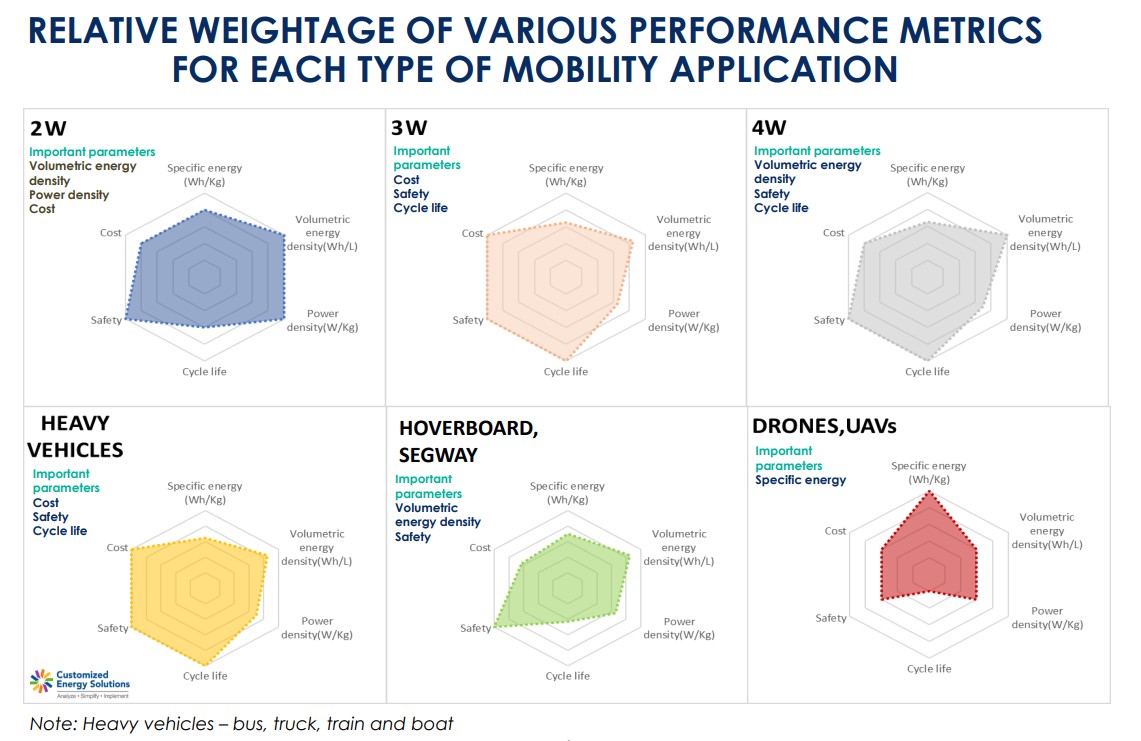The world is undergoing immense transition in one of the key aspects governing our lives - in the generation, availability and use of energy that supports all dimensions of our existence. Food production, processing and delivery, infrastructure development, clothing industry, transportation, healthcare, and any other activity crucial for our sustenance depends on energy. Over time, we have become used to depending on fossil fuels for providing us this key supporting ingredient. It is this core enabler that is undergoing transition.
This transition is taking place, in part, due to the development of advanced technologies for energy storage and conversion. In this series of reports, we attempt to cover all the major technologies, which are either currently commercially available, or those that are in the late development stages and will be commercially manufactured at scale in the next 3-5 years. All technologies for energy storage and conversion are constantly evolving, and improving in performance owing to the ongoing efforts of the global academic and industrial community.
In the current report, which is the first in the series, we cover the technologies that are of interest for e-mobility applications. These applications can range from small personal transportation devices such as the Segway and hoverboards, to heavy duty vehicles such as trucks, trains and medium sized boats.
- Gradual electrification of mobility is taking place around the world, with energy storage and conversion technologies playing a key role in enabling this transition.The suitable technologies exhibit high energy density (Wh/kg and Wh/L) and enable users to have long driving range or usage time on a single charge for the transportation device or vehicle.Lithium-ion batteries (NCA, NMC and LFP) have become key technologies for EVs, and have captured almost the entire market. Several innovations and improvements continue to occur within these chemistries via invention of new cathode and anode materials.New chemistries such as solid-state batteries (SSBs), lithium-sulfur batteries (LiS) continue to stretch the limits of performance.
- Proton Exchange Membrane Fuel Cells (PEMFCs) represent another promising technology for EVs, and their major application areas are in heavy vehicles (buses, boats, trucks and trains).
- The report attempts to capture current status, main players, key developments and expected improvements in various technologies of interest, for enabling electrification of transportation. The slide deck is divided into five sections - starting from classification of applications in e-mobility and their application-specific requirements from storage technologies. The next three sections address key technologies suitable for these applications: LIBs, SSBs and PEMFCs and super capacitors.

- All transportation applications require compact (high Wh/L) and lightweight (high Wh/kg) technologies for improving driving range and reduction of ‘range anxiety’.
- Heavy duty applications such as trucks, buses, boats and trains, which have a heavy chassis, can hold a heavy battery and can tolerate lower Wh/kg technologies.
- Flying applications such as drones and UAVs are very sensitive to battery weight (need high Wh/kg), butcan tolerate high battery volume (low Wh/L).
- Bicycles and 2W are sensitive to both the weight and volume of the battery due to space constraints, and ease of vehicle handling and balancing limitations.
